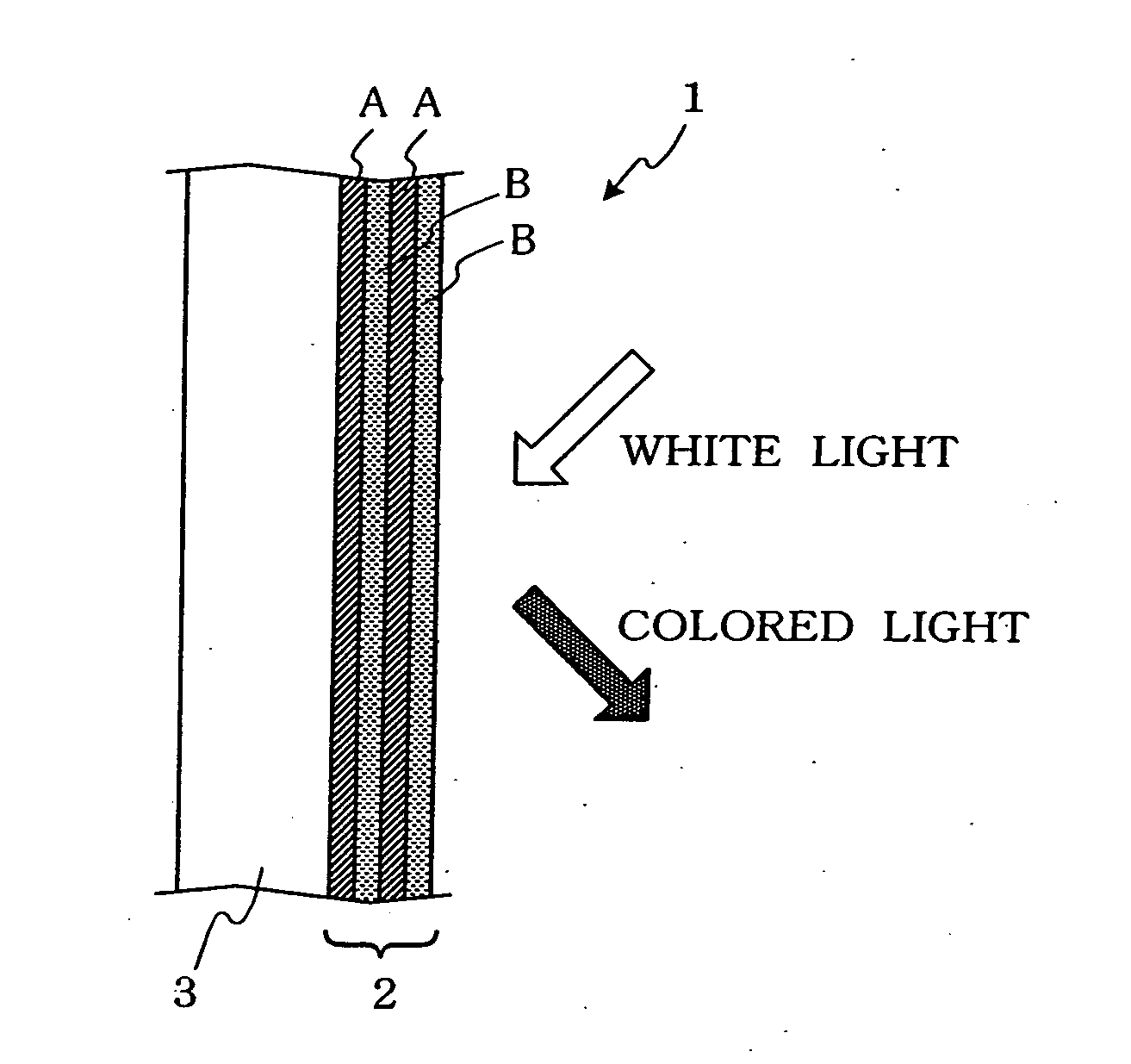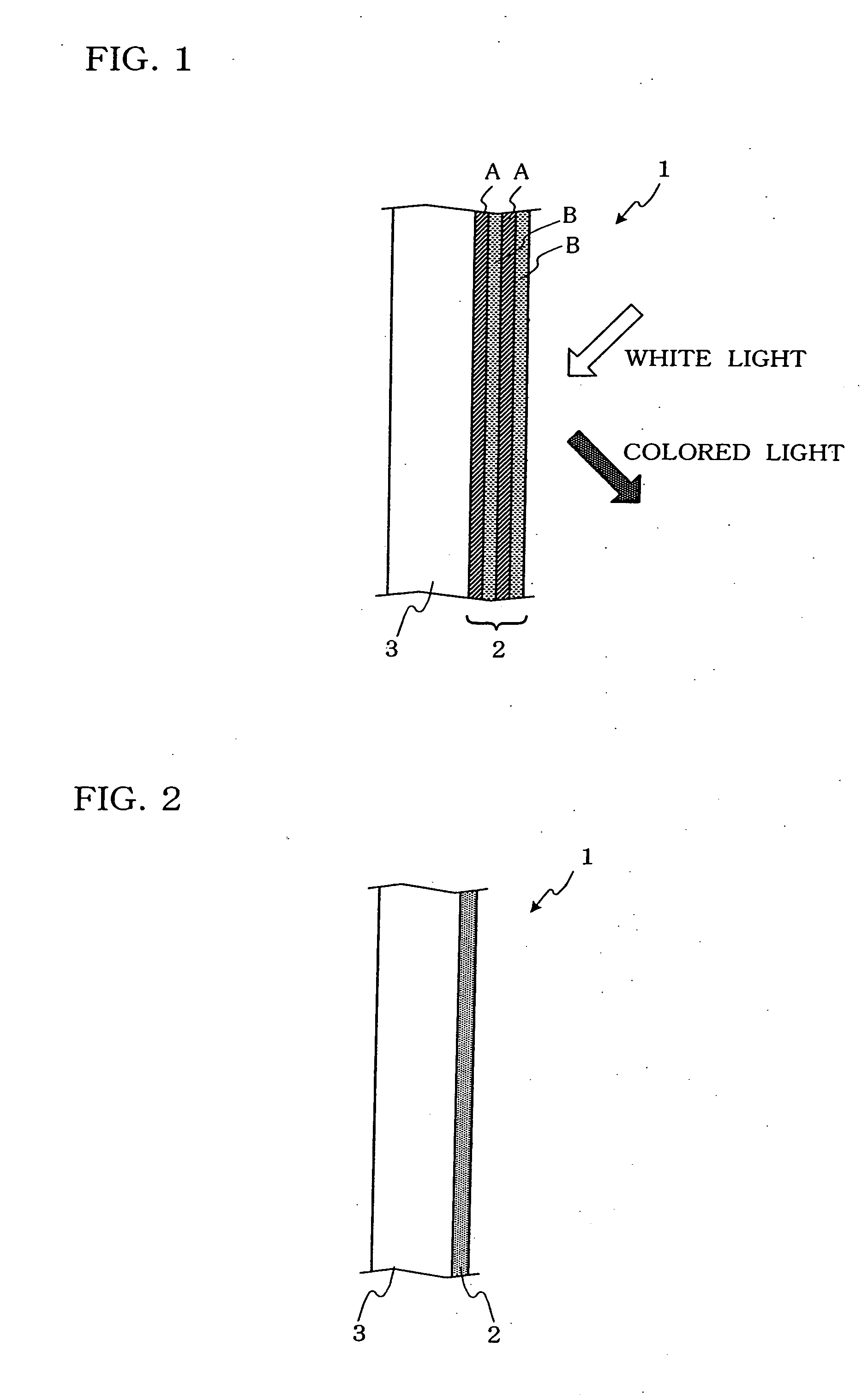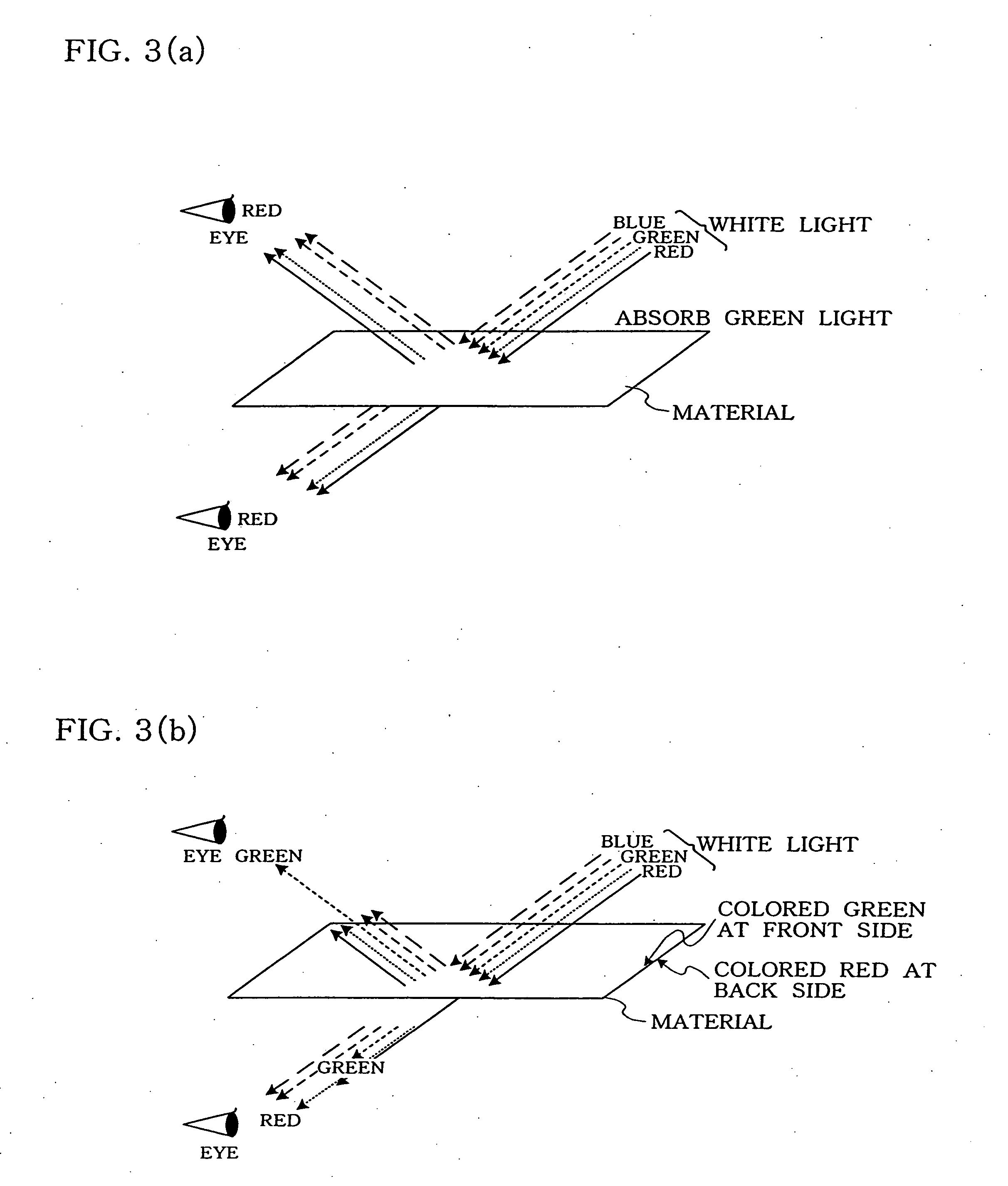Decorated plastic package and method for reproduction
a plastic package and reproduction technology, applied in the field of colored plastic package, a method for decorating, and a reproduction method, can solve the problems of difficult recycling of colored package, limited penetration of wavelength components of light absorbed by coloring components into the containers, and high cost, so as to promote recycling and reduce the ratio of containers
- Summary
- Abstract
- Description
- Claims
- Application Information
AI Technical Summary
Benefits of technology
Problems solved by technology
Method used
Image
Examples
first embodiment
[0141] FIGS. 5 to 7 are drawings for illustrating a first embodiment of the method for forming a periodically arranged structure different in optical characteristics.
[0142] In the present embodiment, a periodically arranged structure is formed on a plastic bottle container utilizing a diffraction phenomenon of a laser light.
[0143] In this method, a laser source 11, a lens 12, and a diffraction grating 13 are used.
[0144] The laser source 11 oscillates a laser light and, for example, carbon dioxide gas laser, YAG laser, semiconductor laser, helium-neon or argon gas laser, excimer laser, and the like can be used. In addition, those whose wavelengths are converted into these laser lights can be also used.
[0145] The laser light may be used in a continuous oscillation state or in a pulse oscillation state.
[0146] The lens 12 is used for converting the laser light oscillated from the laser source 11 into a parallel ray.
[0147] The diffraction grating 13 diffracts the laser light. For e...
second embodiment
[0156]FIG. 8 is a drawing for illustrating a second embodiment of the method for forming a periodically arranged structure different in optical characteristics.
[0157] In the present embodiment, a periodically arranged structure is formed on a plastic bottle container utilizing refraction and convergence of a laser light.
[0158] In the present embodiment, fine concavities and convexities 19 having a lens effect are formed on a wall 15 of a plastic bottle container 14.
[0159] The concavities and convexities 19 can be formed, for example, by forming concavities on the surface of a blow mold, and transferring the shape from the mold to the container wall during a thermal treatment in the molding step of the above plastic bottle container.
[0160] When the concavities and convexities 19 formed on the wall 15 of the plastic bottle container are irradiated with a laser light as in the first embodiment, as shown in FIG. 8, the laser light is refracted by a lens effect of the concavities and...
third embodiment
[0164]FIG. 9 is a drawing for illustrating a third embodiment of the method of forming a periodically arranged structure different in optical characteristics.
[0165] In the present embodiment, light / heat-absorbing fine particles 20 which are to be nuclei of heat generation are mixed and dispersed into a main material resin of a plastic bottle container 14, and then molding of the container is achieved.
[0166] The light / heat-absorbing fine particles are fine particles which react with a specific laser light to generate heat. For example, there may be mentioned mica, kaolin, talc, titanium oxide-coated mica, and the like.
[0167] The particle size of the light / heat-absorbing fine particles is from 0.1 μm to 100 μm. When the size is larger than 100 μm, there is a risk that a resin becomes opaque when mixed therewith. Preferably, the size is from 0.2 μm to 30 μm.
[0168] The light / heat-absorbing fine particles 20 may be mixed with the whole of the plastic bottle container (preform) but ma...
PUM
| Property | Measurement | Unit |
|---|---|---|
| thickness | aaaaa | aaaaa |
| wavelength range | aaaaa | aaaaa |
| thickness | aaaaa | aaaaa |
Abstract
Description
Claims
Application Information
 Login to View More
Login to View More - R&D
- Intellectual Property
- Life Sciences
- Materials
- Tech Scout
- Unparalleled Data Quality
- Higher Quality Content
- 60% Fewer Hallucinations
Browse by: Latest US Patents, China's latest patents, Technical Efficacy Thesaurus, Application Domain, Technology Topic, Popular Technical Reports.
© 2025 PatSnap. All rights reserved.Legal|Privacy policy|Modern Slavery Act Transparency Statement|Sitemap|About US| Contact US: help@patsnap.com



